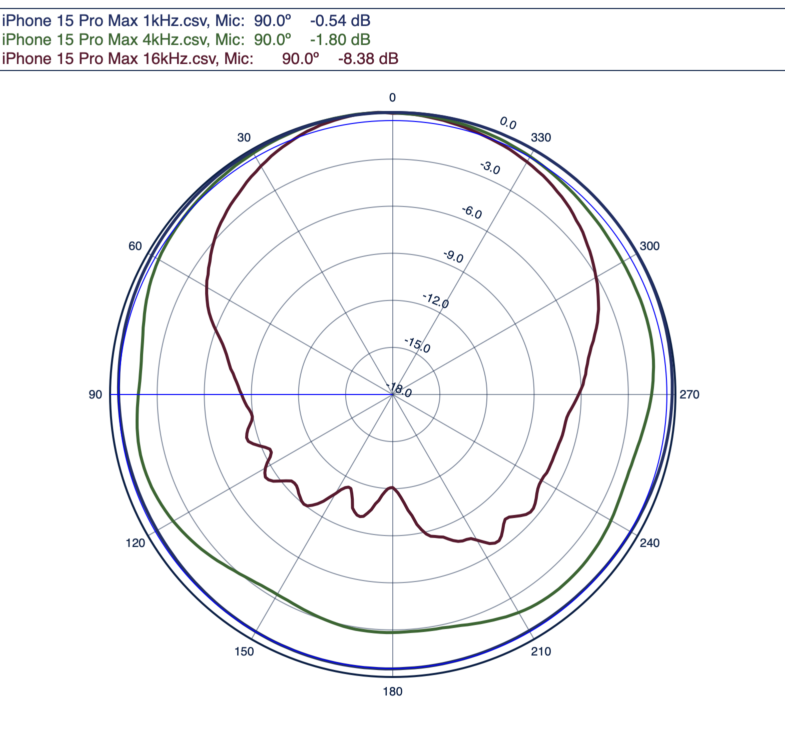Measured: iPhone 15 Pro Max microphone frequency response and directivity
In the early days of the iPhone app store, I posted frequency response measurements of some iPhone microphones, including before and after certain iOS updates. This post represents the beginning of a new effort to measure the performance characteristics of iPhone microphones. Similar to the recent post on the Vision Pro microphone, two important metrics will be frequency response (magnitude) as well as the directional response of the primary (bottom) iPhone microphone.
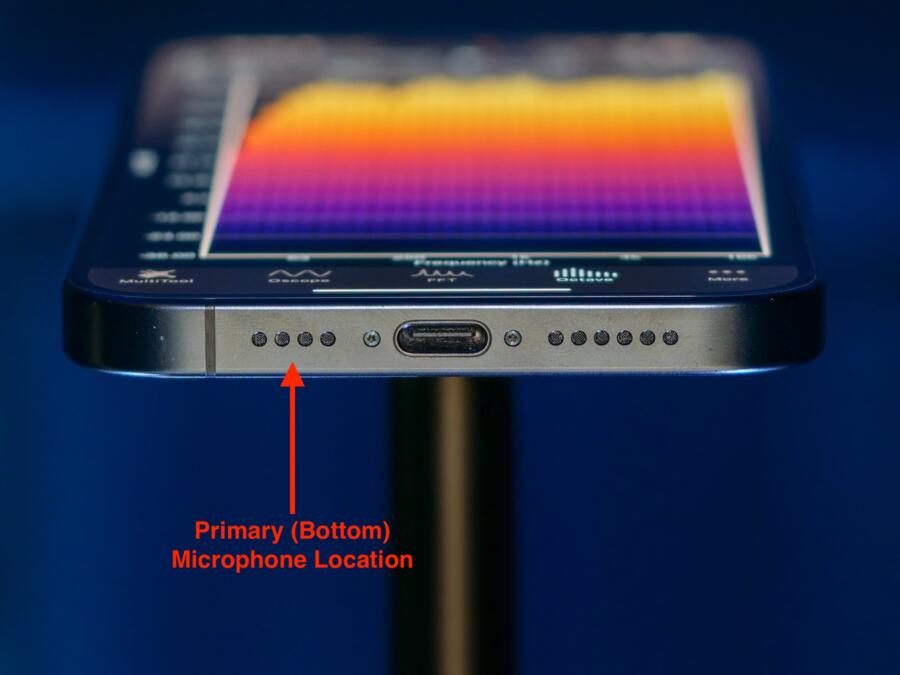
Frequency Response
In order to measure the frequency response of the iPhone’s microphone, a lab-grade reference microphone (PCB model 378B02 1/2-inch pre-polarized free-field condenser microphone) was positioned facing the iPhone mic approximately 1 mm away from it. The speaker was behind the PCB mic, facing the iPhone. Both microphone signals were fed into a 485B39 USB stereo ICP signal conditioner and the response of the iPhone relative to the reference mic was measured using SignalScope’s Dual FFT Analyzer. Then, the iPhone and PCB mic were rotated 180 degrees, keeping the same orientation and position relative to each other, and the response was measured again. Finally, the 2 resulting frequency response measurements were averaged. The result is shown in the following graphs, which were created in SignalScope.
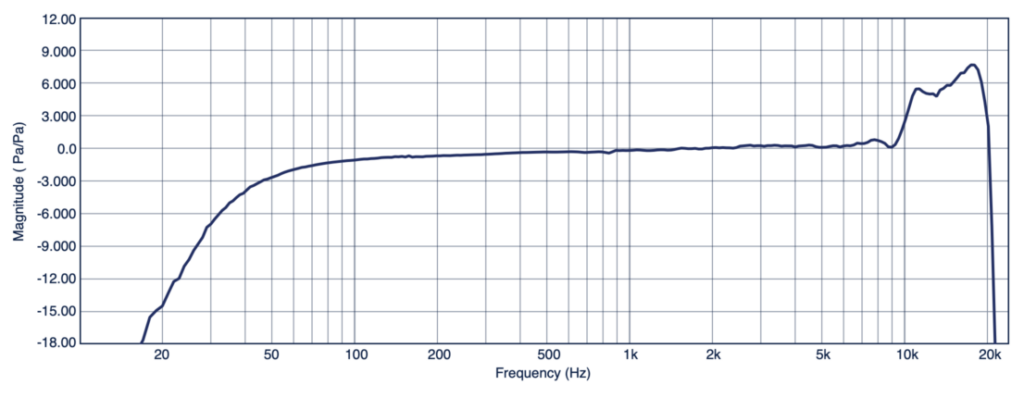
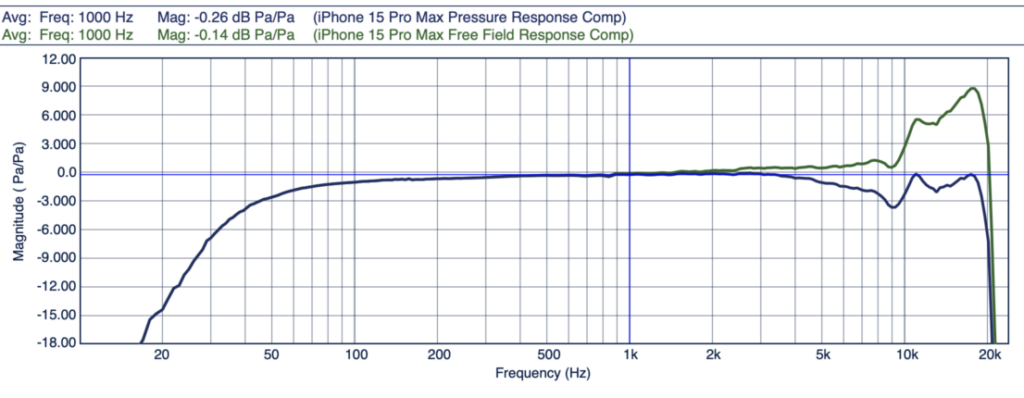
Directivity
The iPhone’s bottom microphone sits to one side of the phone, which means that sound will be better received when the sound is coming from that side, especially at higher frequencies. Higher frequencies have shorter wavelengths and when the sound encounters an obstacle (such as the body of the iPhone) that is larger than the wavelength, less of the sound will reach the other side of that obstacle. The way a microphone receives sound from different directions can be described by its directivity (sometimes referred to as its polar response or polar pattern).
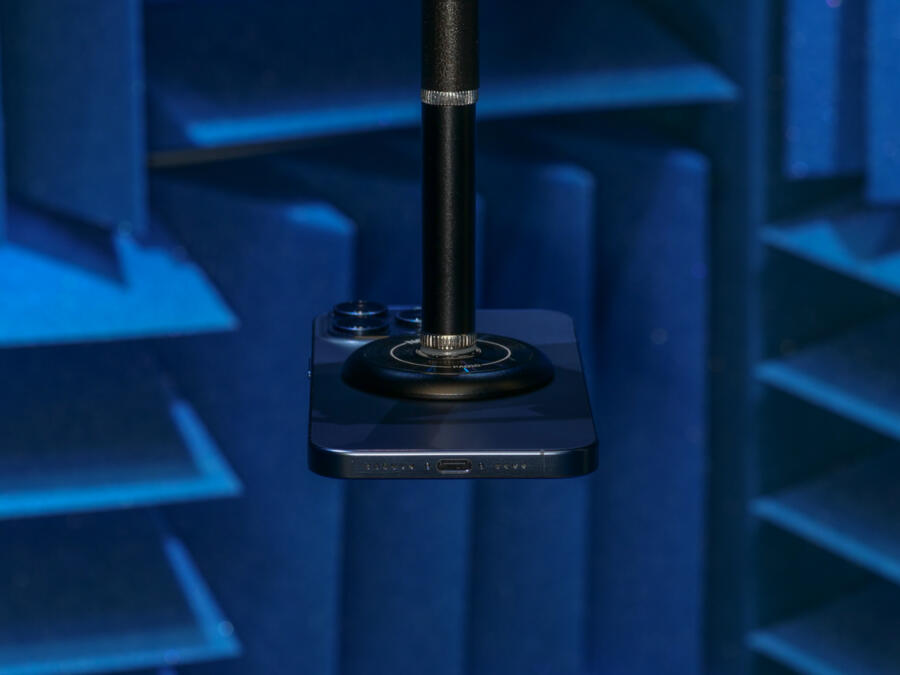
To get a better understanding of the directivity of the iPhone’s microphone, we mounted it inside our anechoic chamber and measured the sound from a loudspeaker pointed at the grill covering the microphone from different angles in 1.5 degree increments. The directional behavior of the iPhone microphone is shown in the polar plots, below, which were created in SignalScope.
